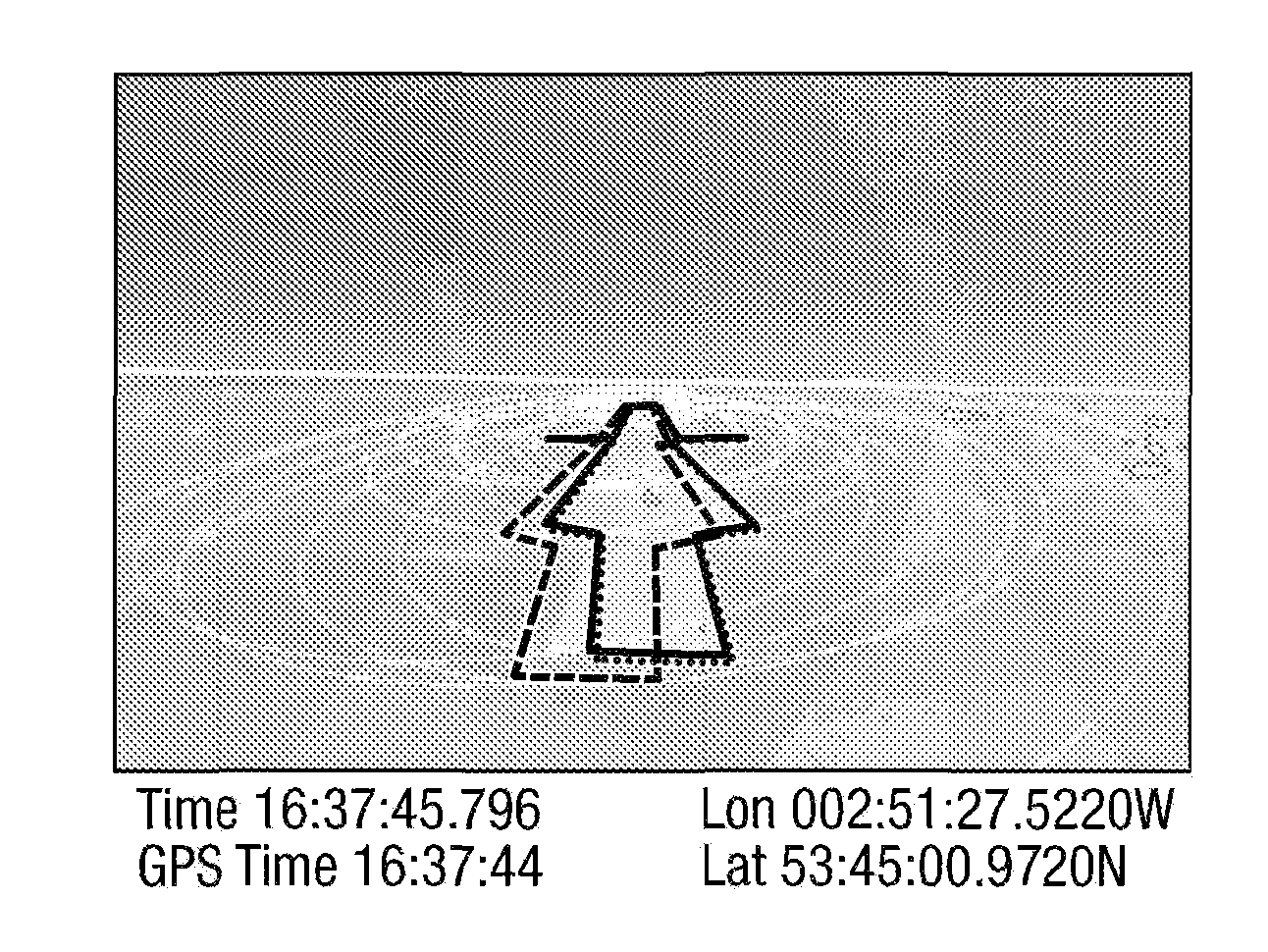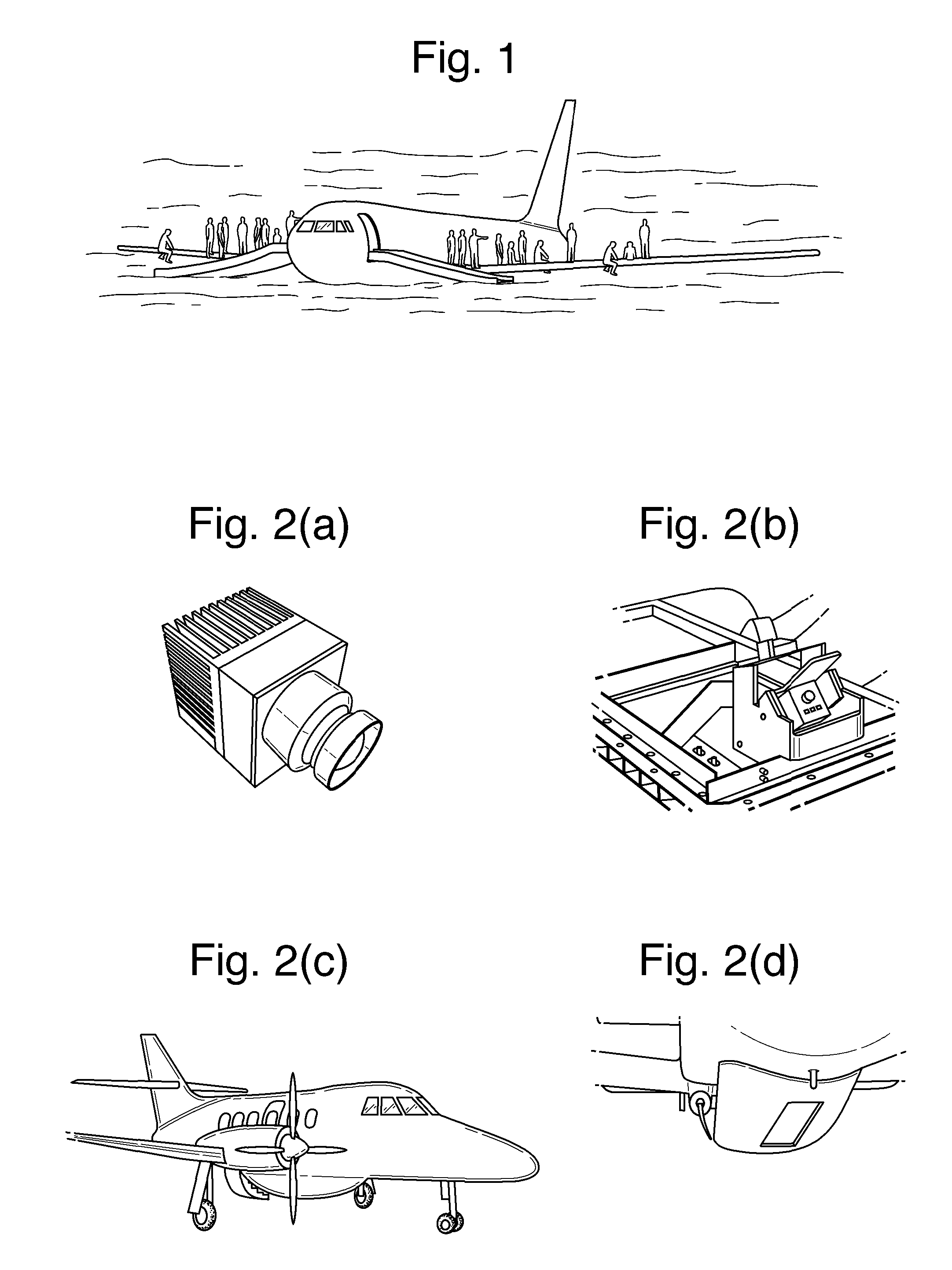Identification and analysis of aircraft landing sites
a technology for aircraft landing sites and aircraft, applied in the field of identification and analysis of aircraft landing sites, can solve problems such as important flight certification issues and the inaccessibility of planned landing sites
- Summary
- Abstract
- Description
- Claims
- Application Information
AI Technical Summary
Benefits of technology
Problems solved by technology
Method used
Image
Examples
Embodiment Construction
[0037]The system is being developed for the BAE Systems Military Air Solutions Flying-Test-Bed Jetstream aircraft, which acts as a surrogate UAV. During this research, the aircraft was equipped with a Thermoteknix Miricle 307 infrared camera in a fixed angled pan and tilt position installed in the undercarriage behind a Germaniun coated glass cover. The camera, camera mount, aircraft and baggage pod are shown in FIG. 3-3. This sensor is an uncooled microbolometer with a resolution of M×N=640×480 detecting wavelengths between 7-14 μm in the long-wave infrared spectrum. This is coupled to the widest angle lens available that could be installed (see Table 3). The analogue video output is digitised by a GE Series Fanuc. The digital video output is recorded using a STACK DVR2-440, which is a ruggedised solid state MPEG-2 encoder with time-stamp and GPS overlays. The video data is recorded at 25 Hz. A Honeywell Laser Inertial Navigation System (LINS) with a GARMIN GPS 496 and barometric a...
PUM
 Login to View More
Login to View More Abstract
Description
Claims
Application Information
 Login to View More
Login to View More - R&D Engineer
- R&D Manager
- IP Professional
- Industry Leading Data Capabilities
- Powerful AI technology
- Patent DNA Extraction
Browse by: Latest US Patents, China's latest patents, Technical Efficacy Thesaurus, Application Domain, Technology Topic, Popular Technical Reports.
© 2024 PatSnap. All rights reserved.Legal|Privacy policy|Modern Slavery Act Transparency Statement|Sitemap|About US| Contact US: help@patsnap.com










